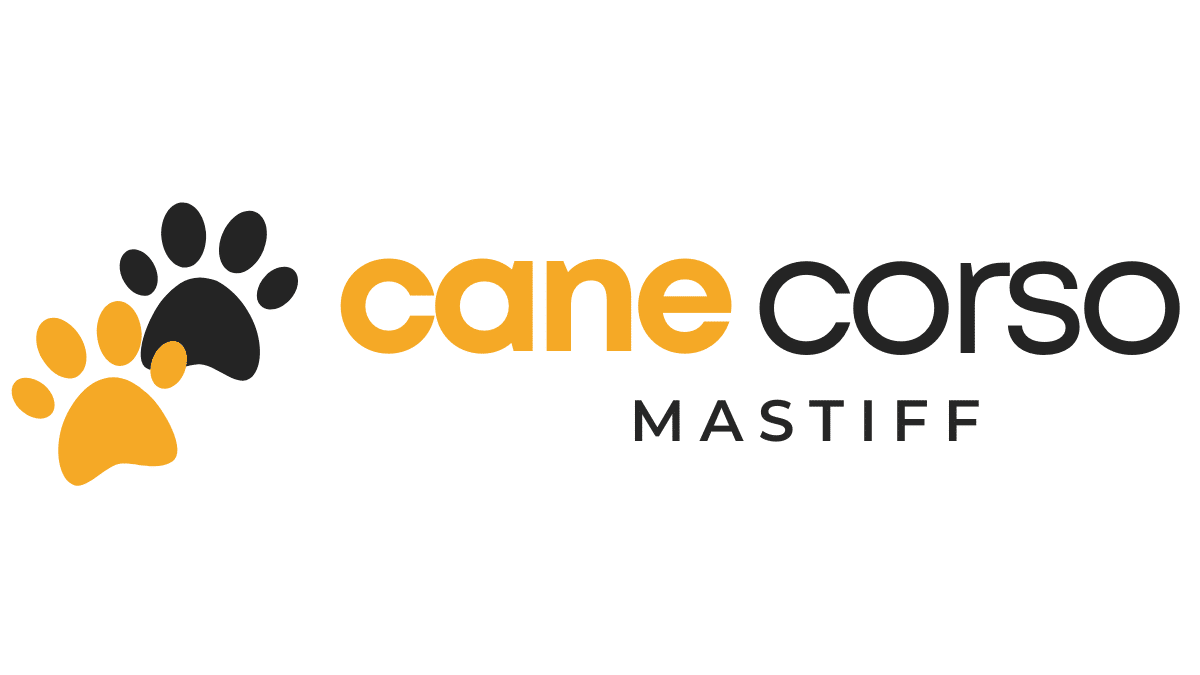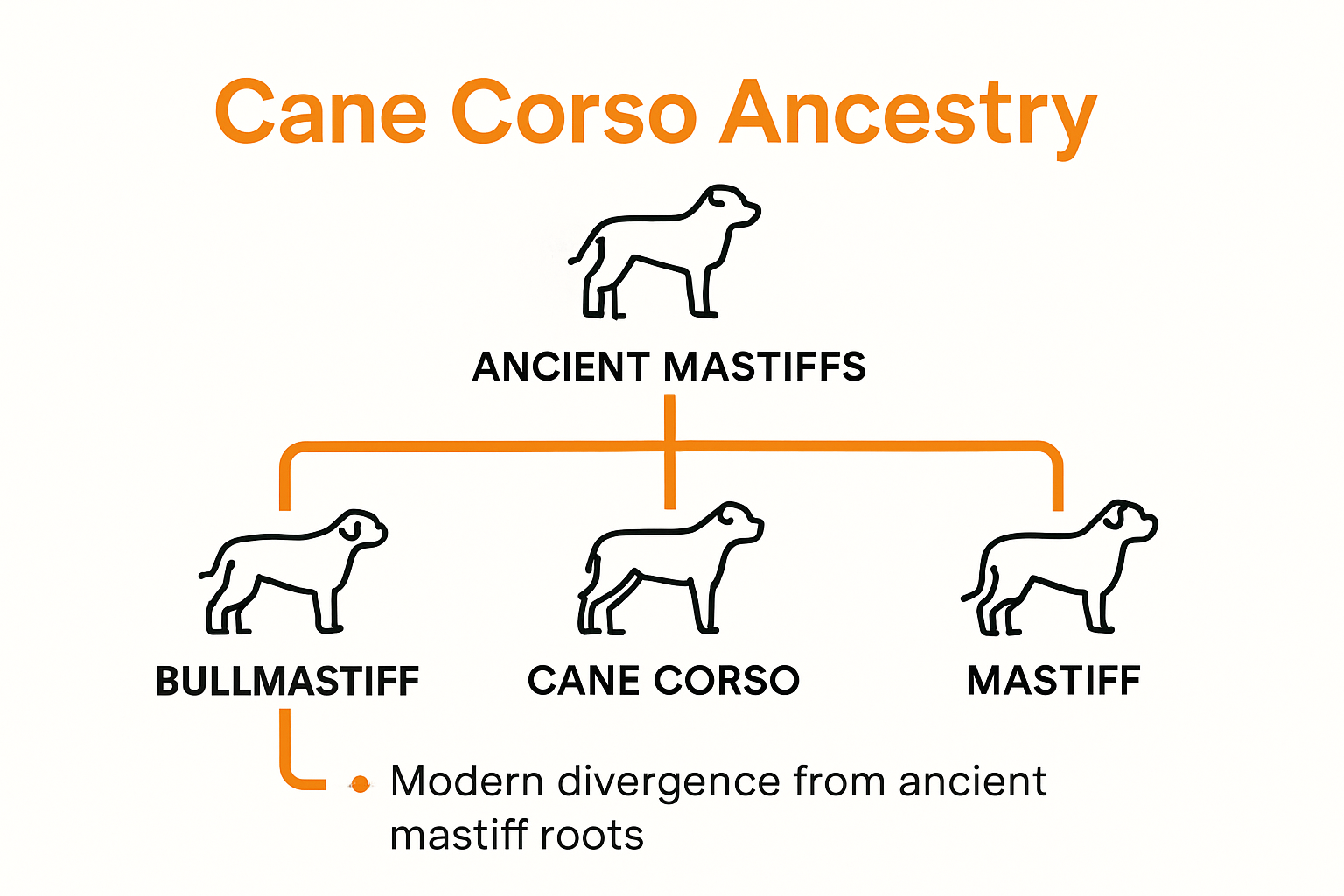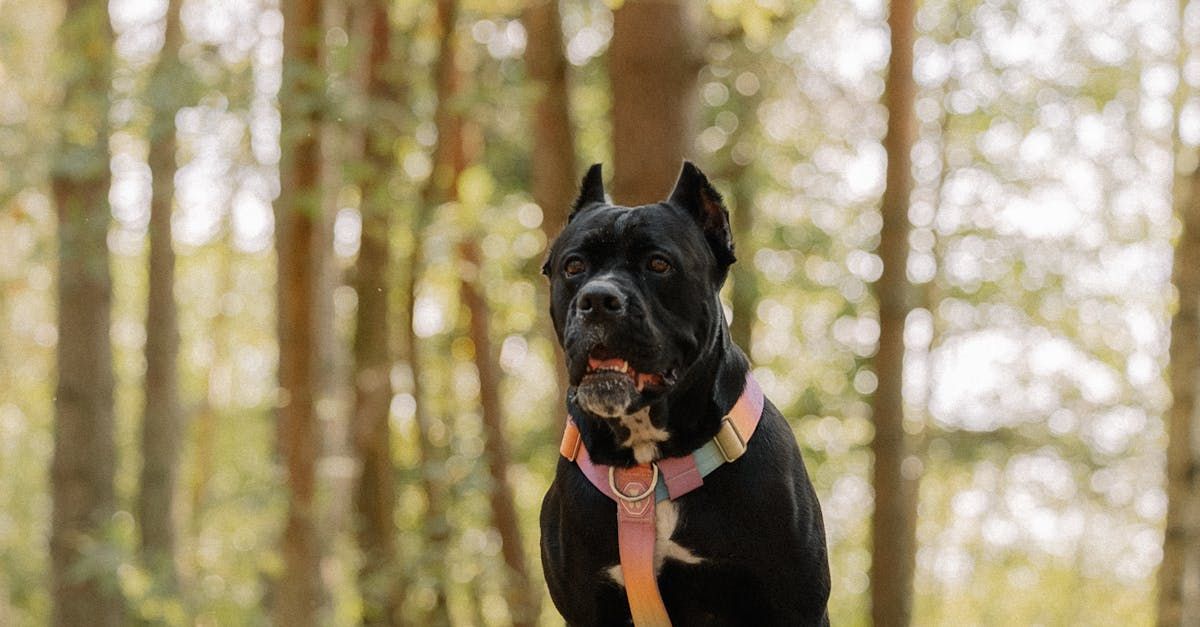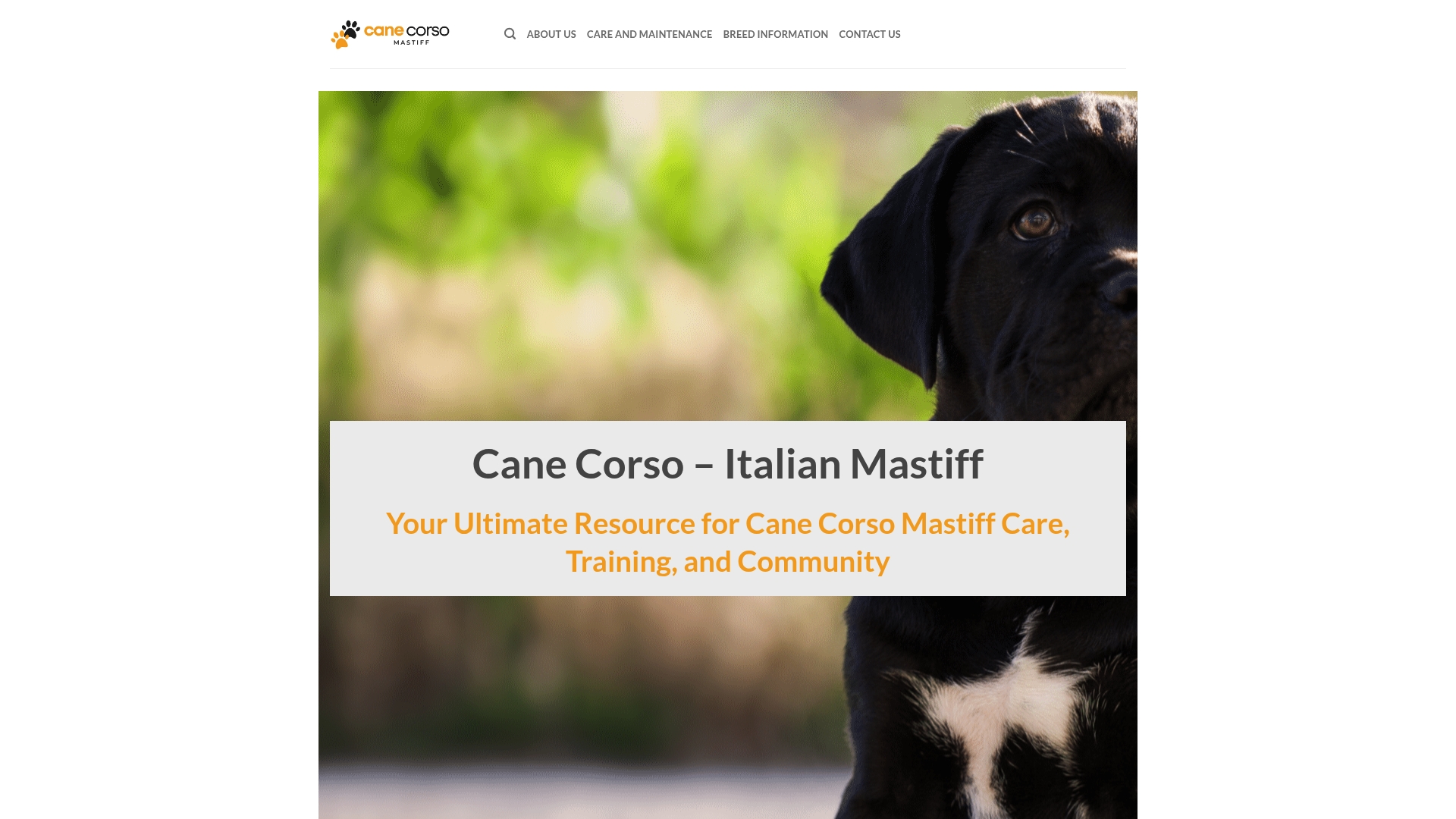Cane Corsos have exploded in popularity, leaving many dog lovers wondering how they really stack up against other mastiffs. Here’s the shocker. Despite sharing the same ancient roots, the Cane Corso’s genetic split from traditional mastiffs happened just 65 to 85 years ago, making them a modern outlier in the mastiff world. Instead of the same old heavy giant stereotype, this breed blends athleticism, sharp intelligence, and family focus in ways most mastiffs never did.
Table of Contents
- Understanding Mastiff Breeds And Origins
- Comparing Size, Build, And Appearance
- Temperament And Family Compatibility
- Training, Care, And Health Considerations
Quick Summary
| Takeaway | Explanation |
|---|---|
| Cane Corso’s Unique Origins | The Cane Corso, with its rich Italian heritage, has distinct genetic differences from other mastiff breeds, showcasing an evolutionary path that diverged approximately 65 to 85 years ago. |
| Physical Distinctions | The Cane Corso has a more athletic and muscular build compared to traditional mastiffs like the English Mastiff, which are bulkier and heavier. This breed stands between 24 to 27.5 inches tall and weighs 99 to 110 pounds for males. |
| Temperament and Family Compatibility | Cane Corsos possess exceptional social intelligence and are adaptable in family settings, but require early socialization and consistent training to balance their protective instincts with a family-friendly demeanor. |
| Training Needs | Effective training methodologies for Cane Corsos hinge on positive reinforcement and structured interactions, as they are intelligent and thrive on mental stimulation and clear leadership. |
| Exercise and Care Requirements | Cane Corsos require significantly more exercise and mental engagement than typical mastiff breeds, needing at least 60 minutes of active movement daily, along with puzzle toys and structured training sessions to meet their athletic needs. |
Understanding Mastiff Breeds and Origins
The world of mastiff breeds represents a fascinating tapestry of canine history, with roots stretching back thousands of years. These powerful dogs have evolved from ancient working companions to modern-day protectors, each breed carrying a unique story of survival and adaptation.
The Ancient Origins of Mastiff Breeds
Mastiff breeds trace their lineage to some of the most ancient dog populations in human history. Archaeological evidence from the British Isles reveals that these massive dogs were prized by ancient civilizations for their incredible strength and protective instincts. The Romans were particularly fascinated by these dogs, often importing them to fight in the Coliseum and use them in military campaigns.
The Cane Corso, specifically, emerges from a rich Italian heritage. Genetic studies show a fascinating divergence from other mastiff breeds, with the American and Italian populations splitting approximately 65 to 85 years ago. This genetic separation highlights the breed’s unique evolutionary path.
Distinctive Characteristics of Mastiff Lineages
Mastiff breeds are not simply large dogs but complex genetic lines with specific purposes. The Cane Corso, for instance, stands out with its distinctive physical characteristics. According to international breed standards, male Cane Corsos typically stand 24 to 27 inches tall and weigh between 99 to 110 pounds. Females are slightly smaller, maintaining the breed’s impressive muscular structure.
The breed’s coat is particularly noteworthy – short, dense, and lustrous, coming in various colors including black, grey, fawn, and brindle. These physical traits are not just aesthetic but represent centuries of careful breeding and adaptation to specific working environments.
Evolutionary Purpose and Modern Roles
Originally bred as working dogs, mastiff breeds like the Cane Corso were critical to agricultural and protective tasks. They guarded livestock, protected properties, and served as invaluable companions to farmers and families. Our comprehensive guide on Italian Mastiff origins explores how these dogs transitioned from rural working animals to modern companion and protection dogs.
Today, mastiff breeds continue to demonstrate their versatility. While their physical prowess remains impressive, they have adapted to become loyal family protectors, working dogs, and beloved companions. The Cane Corso, in particular, embodies this evolution – a breed that combines ancient strength with modern companionship, bridging historical working dog traditions with contemporary family needs.
Comparing Size, Build, and Appearance
Mastiff breeds represent a remarkable spectrum of canine physiques, with the Cane Corso standing out as a uniquely proportioned and athletic breed among its massive counterparts. Understanding the subtle and significant differences in size, build, and appearance provides crucial insights for potential owners and breed enthusiasts.
Physical Dimensions and Structural Variations
The Cane Corso distinguishes itself through a more athletic and less bulky build compared to traditional mastiff breeds. According to the American Kennel Club, male Cane Corsos typically range between 24 to 27.5 inches tall at the shoulder and weigh 99 to 110 pounds, while females stand 23.5 to 26 inches and weigh 88 to 99 pounds. This breed demonstrates a leaner, more muscular profile compared to other mastiff types.
In contrast, traditional English Mastiffs are significantly larger and heavier. Research from veterinary breed studies indicates these dogs can weigh up to 230 pounds, with males potentially reaching heights of 30 inches. The Neapolitan Mastiff, another close relative, tends to be more massive and droopy-skinned, presenting a dramatically different physical appearance from the Cane Corso’s sleek musculature.
Before diving further, here’s a table helping you quickly compare the major physical characteristics of Cane Corso versus other popular mastiff breeds referenced in this section:
| Breed | Height (Male) | Weight (Male) | Build | Notable Features |
|---|---|---|---|---|
| Cane Corso | 24 – 27.5 inches | 99 – 110 lbs | Athletic, muscular | Short, dense coat; proportional head |
| English Mastiff | Up to 30 inches | Up to 230 lbs | Bulky, massive | Loose skin, heavy build, black mask |
| Neapolitan Mastiff | ~26 – 31 inches | 150 – 200+ lbs | Heavy, droopy | Excess skin, wrinkled, imposing profile |
Coat and Coloration Differences
Coat characteristics represent another critical distinguishing factor among mastiff breeds. The Cane Corso boasts a short, dense, and lustrous coat that lies close to the body, providing a streamlined appearance. Breed standards recognize multiple coat colors including black, grey, fawn, red, and brindle patterns, with subtle white markings permitted on the chest and feet.
Other mastiff breeds exhibit more varied coat textures and color ranges. The English Mastiff typically displays a shorter, dense coat in colors like fawn, apricot, and brindle, often with a black mask. Neapolitan Mastiffs feature looser, more wrinkled skin and coats that can appear more rough and less uniform compared to the Cane Corso’s sleek presentation.
Structural Adaptations and Breed-Specific Characteristics
Beyond mere measurements, each mastiff breed reveals unique structural adaptations reflecting its historical working purposes. The Cane Corso emerges as a more agile variant, bred for active roles like hunting and farm protection. Detailed breed analysis reveals a body designed for movement and versatility, with a powerful chest, strong limbs, and a more proportional head-to-body ratio compared to other mastiff breeds.
The breed’s head is particularly distinctive – large but proportional, with a slightly over one-third length relative to shoulder height. Ears are typically cropped or natural, and the overall head structure suggests intelligence and alertness rather than the more passive appearance of some other mastiff types.
These nuanced differences highlight why the Cane Corso stands apart. While sharing the fundamental mastiff characteristics of strength and protective instincts, it offers a more refined, athletic interpretation of the classic mastiff archetype. Potential owners should appreciate these subtle yet significant variations when considering their ideal companion.
Temperament and Family Compatibility
Choosing a mastiff breed involves understanding more than just physical characteristics. Temperament plays a crucial role in determining whether a dog will integrate seamlessly into a family environment, and mastiff breeds demonstrate remarkable variations in their social and emotional behaviors.
Personality Dynamics and Social Intelligence
The Cane Corso stands out as a breed with exceptional social intelligence and complex emotional characteristics. Research from canine behavioral studies indicates these dogs possess a unique combination of confidence, alertness, and deep familial loyalty. Unlike some mastiff breeds that are purely passive guardians, Cane Corsos actively engage with their family members, demonstrating a nuanced understanding of social dynamics.
Compared to other mastiff breeds like the English Mastiff, the Cane Corso exhibits a more dynamic personality. While English Mastiffs tend to be calm and somewhat sedentary, Cane Corsos require more mental stimulation and physical activity. Veterinary behavioral experts note that this breed thrives on structured interaction and consistent training, making them ideal for active families who can provide structured engagement.
Family Integration and Child Interactions
Family compatibility represents a critical consideration for potential mastiff owners. The Cane Corso demonstrates remarkable adaptability in family settings, but requires careful socialization. Our comprehensive guide on companion temperaments explores the intricate balance of protection and gentleness these dogs can achieve.
Unlike some mastiff breeds that are universally gentle, the Cane Corso’s interaction with children depends significantly on early training and socialization. They are naturally protective but can be reserved around unfamiliar children. Professional trainers recommend introducing these dogs to children and various social scenarios from a young age to ensure balanced behavior.
Working Instincts and Social Adaptation
Mastiff breeds originate from working dog backgrounds, and the Cane Corso exemplifies this heritage most distinctively. Genetic behavioral studies reveal that these dogs retain strong guarding instincts, which translate into exceptional family protection capabilities. They are not merely passive guardians but actively assess and respond to potential environmental threats.
This breed’s working dog heritage means they require more mental engagement compared to other mastiff types. Families considering a Cane Corso should be prepared to provide consistent training, regular exercise, and structured social interactions. Their intelligence demands an owner who understands their complex psychological needs.
While other mastiff breeds might be content with minimal interaction, the Cane Corso craves meaningful engagement. They form deep, loyal bonds with family members but expect clear leadership and consistent boundaries. Their temperament is less about blind obedience and more about mutual respect and understanding.
Prospective owners should recognize that the Cane Corso is not just a pet but a committed family member who brings remarkable depth of personality, protective instincts, and emotional intelligence to the household. Understanding and respecting their unique temperamental characteristics ensures a harmonious and rewarding relationship.
Training, Care, and Health Considerations
Owning a Cane Corso or another mastiff breed requires a comprehensive understanding of specialized training techniques, nuanced care requirements, and proactive health management. These powerful dogs demand a dedicated and informed approach to ensure their physical and mental well-being.
Training Methodologies and Behavioral Development
Training a Cane Corso represents a unique challenge that distinguishes it from other mastiff breeds. Veterinary behavioral experts emphasize that these dogs require consistent, positive reinforcement-based training starting from early puppyhood. Unlike more passive mastiff breeds, Cane Corsos possess high intelligence and a strong desire for structured interaction, making early socialization critical.
The breed’s working dog heritage demands a more intensive training approach. Professional trainers recommend establishing clear leadership and providing mental stimulation through obedience training, task-oriented activities, and controlled social interactions. Canine behavioral research indicates that Cane Corsos respond exceptionally well to training methods that balance firm guidance with positive reinforcement.
Health Considerations and Preventative Care
Health management for Cane Corsos differs significantly from other mastiff breeds. Veterinary studies highlight specific genetic predispositions that require targeted preventative care. These dogs are prone to conditions like hip and elbow dysplasia, eye problems such as entropion and ectropion, and potential cardiac issues.
Compared to other mastiff breeds, Cane Corsos require more proactive health monitoring. Our comprehensive guide on senior dog care provides in-depth insights into managing the breed’s unique health challenges. Regular veterinary check-ups, genetic screening, and a carefully managed diet are crucial for maintaining optimal health and preventing breed-specific complications.
Exercise and Lifestyle Management
Exercise requirements represent another critical distinction between the Cane Corso and other mastiff breeds. These dogs demand a more active lifestyle compared to the typically sedentary English Mastiff. Canine fitness experts recommend daily structured exercise that combines physical activity with mental stimulation.
Below is a summary table outlining the exercise and mental engagement needs for Cane Corsos versus other common mastiff breeds, helping you quickly assess which breed best matches various activity levels:
| Activity Type | Cane Corso | English Mastiff | Neapolitan Mastiff |
|---|---|---|---|
| Daily Exercise Needed | 60+ min (active) | 30 min (light) | 30 min (light-moderate) |
| Mental Stimulation | Essential (training, puzzles, tracking) | Moderate (basic play) | Low to moderate |
| Ideal Owner Lifestyle | Highly active, engaged | Sedentary or moderate | Moderate |
A typical exercise regimen for a Cane Corso should include:
- Structured training sessions: 30-45 minutes of focused obedience work
- Physical exercise: Minimum 60 minutes of active movement
- Mental stimulation: Puzzle toys, tracking exercises, and interactive play
Unlike more passive mastiff breeds, Cane Corsos thrive on dynamic interaction and consistent engagement. Their muscular build and high intelligence require an owner committed to providing comprehensive physical and mental challenges. Potential owners should be prepared to invest significant time in training, exercise, and consistent social interaction.
Ultimately, successful Cane Corso ownership goes beyond traditional pet care. It demands a holistic approach that respects the breed’s unique characteristics, addresses its specific health needs, and provides a structured, engaging environment that allows these remarkable dogs to truly flourish.
Frequently Asked Questions
What are the key differences between Cane Corso and other mastiffs?
How tall and heavy are Cane Corsos compared to English Mastiffs?
What is the temperament of a Cane Corso compared to other mastiffs?
How much exercise does a Cane Corso need compared to other mastiff breeds?
Unlock the Full Potential of Cane Corso Knowledge
Confused by the differences between Cane Corsos and other mastiffs? When you want a loyal protector for your family, it is vital to understand the key genetic, temperament, and care factors described in our article. Missing these distinctions can lead to frustration or mismatched expectations. Do not let uncertainty hold you back from forming the best bond with your Cane Corso. For a deep dive into every detail that sets this breed apart, explore our Breed Basics resource.
Start your journey today with the trusted experts at Cane Corso Mastiff. Visit now to find step-by-step care instructions, clear training guidance, and an active community that makes every Cane Corso owner feel supported. The right answers are just a click away—take action now and ensure your Cane Corso’s 2025 is the best year yet.
Recommended
- Cane Corso Breed Mix Guide 2025: Traits, Care, and Best Matches
- Learn Cane Corso Breed Characteristics | Ultimate Guide
- Exploring Cane Corso History And Origin – 5 Fascinating Facts – Cane Corso Mastiff
- Cane Corso as Guard Dog: Traits, Training, and Family Fit 2025
- Cane Corso Mastiff – All You Need To Know About Italian Masiff Dog
- Cane Corso: Comprehensive Guide to the Italian Mastiff’s Temperament, Size, and Care – Cane Corso Mastiff




